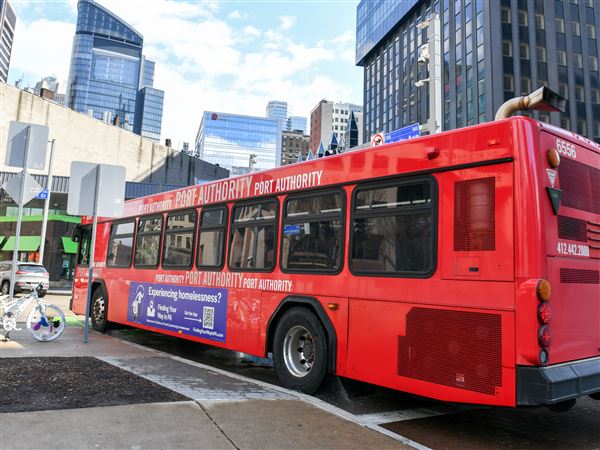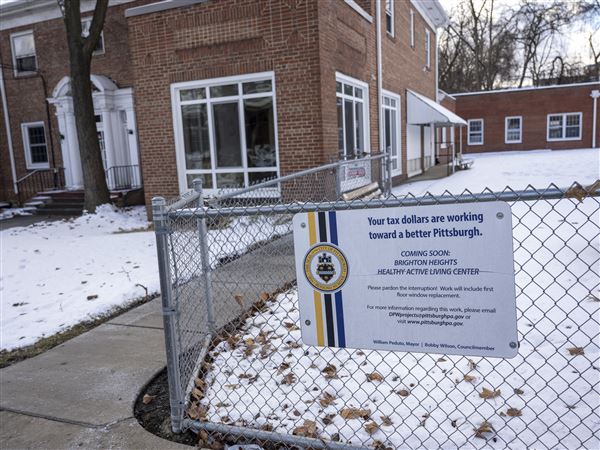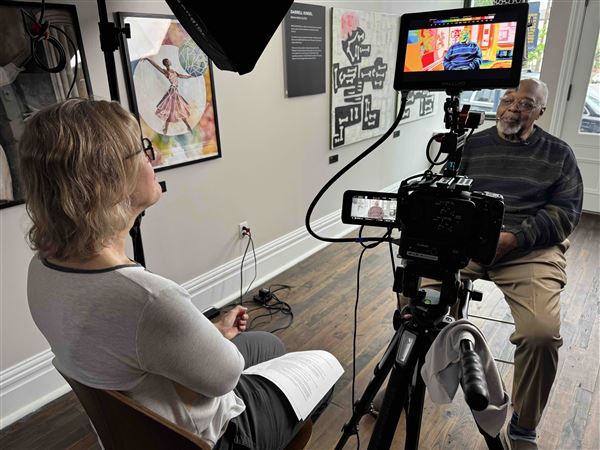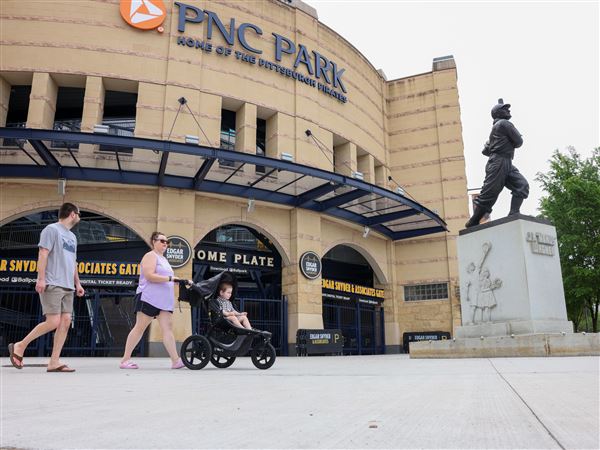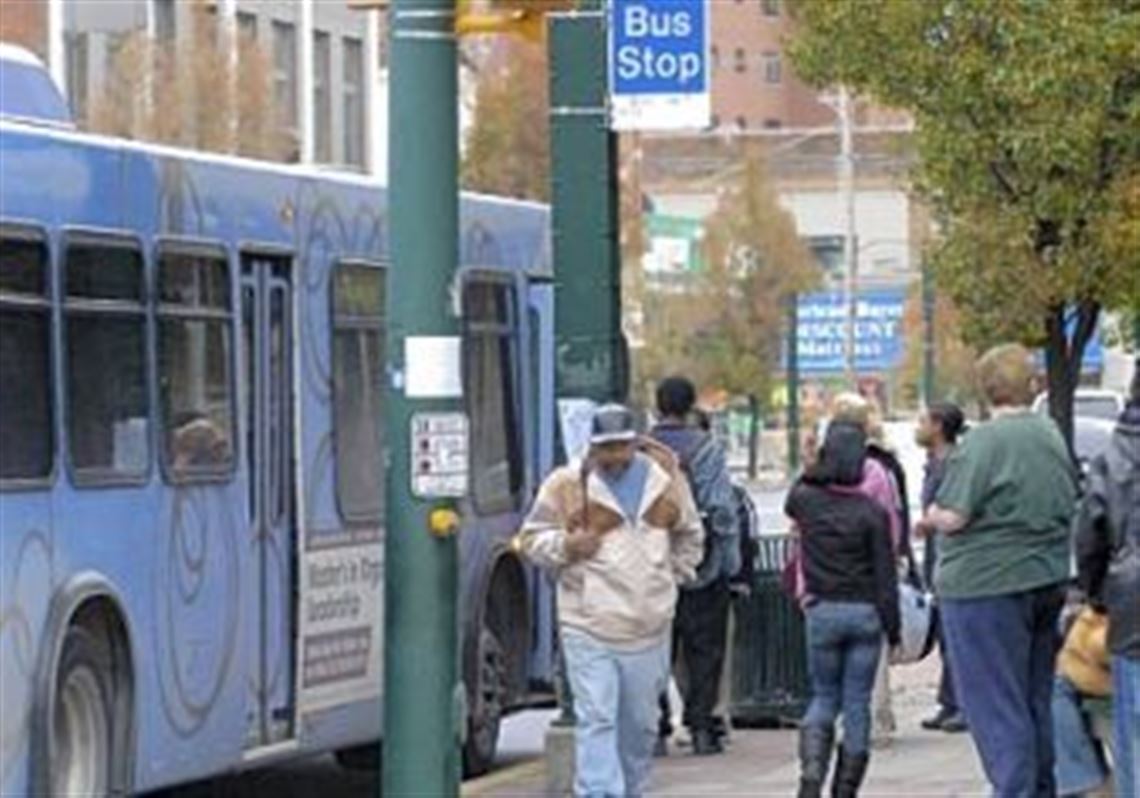After a career spent driving to work while she lived in other states, Jane Deskovich moved to South Park three years ago and began relying on public transportation.
Now she might have to start driving all over again.
Ms. Deskovich, 45, and thousands of her fellow mass transit riders are busy planning ways to cope with a possible Port Authority strike that might occur as early as Dec. 1.
For Ms. Deskovich that likely will mean strapping on her seat belt instead of plopping down in a light-rail car to get to her job at the U.S. Steel Tower on Grant Street, Downtown.
Standing this week on the "T" platform at Steel Plaza station, Ms. Deskovich explained that she snagged a coveted parking pass in a Strip District lot through her company. That's the good news.
On the downside, she said, driving into town along with all the other displaced bus and trolley riders, and then shuttling to the office, will likely mean tacking 30 to 45 minutes each way onto an already long commute.
"I love it," Ms. Deskovich said of the trolley. "I mean it's just so easy. You don't have to worry about the headaches and traffic. Somebody else does the driving. Now I have to worry about it."
As Allegheny County residents prepare for the worst, employees, students and even casual travelers are beginning to realize that a transit strike would mean major hassles -- from longer workdays to shifting schedules, from clogged streets to jammed parking garages, from going out of the way to pick up people in a car pool to not being able to get to work at all.
"I would put it above the level of an inconvenience and below the level of a catastrophe," said Lucinda Beattie, vice president of the Pittsburgh Downtown Partnership's transportation department.
Her group has been working for months with the Allegheny Conference on Community Development to prepare businesses for a potential level of upheaval unseen since the last transit strike in 1992.
Setting up contingency plans in the event of a strike is akin to planning for natural disasters or terrorism, said Ken Zapinski, the conference's senior vice president for transportation and infrastructure.
"This is no different from that sort of risk management planning, except now we have a date staring us in the face," he said.
If the authority's 2,300 operators, mechanics and other hourly personnel walk out, getting from here to there will no longer be as simple as hopping on a bus across the street from one's house and getting off across from one's workplace.
That's exactly what India Turner does for her job as a customer service representative at Highmark.
Ms. Turner, of the Hill District, does not have a car. She is 8 1/2 months pregnant and cannot walk to work, so she is hoping either to find a way to get there through her company or to have her baby before any strike occurs.
"It's really going to affect me," Ms. Turner said. If she can't find a way to get Downtown, "I'd be losing money."
Highmark spokesman Phil Neubauer said his company is optimistic that its 5,000 employees -- about half of whom regularly use mass transit -- will be able to show up Downtown, either in person or virtually, by working from home.
"We're pretty much hopeful that everybody can find an alternate way to get in," Mr. Neubauer said.
Ultimately, people who typically use public transportation have only a handful of options: walk, bike or drive. Motorists can car pool or van pool.
But solving a problem on one end does not automatically translate to a smooth ride. Each day, Port Authority vehicles provide 230,000 rides. If those people take to the roadways, traffic jams are inevitable -- and many of those vehicles will probably have a lone occupant.
"Roughly 45 percent of the people who come to work every day Downtown take transit, and one thing we know about Pittsburghers, based on a survey we did five years ago -- if they're not on a bus, they're driving in by themselves to work," Ms. Beattie said.
Once drivers enter Downtown, finding a parking space -- already at a premium -- would become that much harder.
The Pittsburgh Parking Authority already is making plans. Most of its garages and lots -- about 8,300 spaces -- are already full each day.
But by the end of this month, another 1,000 spots will become available at the new Grant Street Transportation Center at 11th Street and Liberty Avenue. Also at that time, the Second Avenue lot that served as the city's temporary bus terminal will reopen another 500 spaces.
There are about 200 spots that are going unused daily at the Monongahela Wharf. And if the authority chooses to use valet parking at all its sites during any strike, that will free up another 850 spaces by allowing double parking, said Executive Director David Onorato.
Many businesses are taking tacks beyond merely suggesting car pooling. They are polling their work forces to see who takes mass transit, encouraging working from home when possible, or offering flexible hours or compressed schedules, so employees only have to come to work, say, four days a week instead of five.
PNC Financial Services Group, with up to 3,000 employees in Downtown and Oakland who could be affected by a disruption of service on any given day, is not expecting any disruption of its own service.
Whether through car pools, flextime or other arrangements, the bank has a plan to make sure those employees can get their work done, said Jeff Gerlach, PNC's business resiliency manager. He dug up PNC's strike plan from 1992, dusted it off and updated it.
"We are taking this very seriously and we have from the very beginning. We don't want to leave it up necessarily to chance that [a strike] will happen or it won't," he said.
Hilton Pittsburgh, where up to half the staff takes mass transit, also is being proactive to ensure its guests remain pampered.
The hotel is facilitating car pooling efforts and looking into the possibility of paying for shuttles to get workers Downtown from various spots.
"I would be surprised if we get to a point where the guest is suffering because of it, but it's certainly going to make it a challenge that we have to address, getting our workers into their jobs," said Mark De Intinis, the hotel's assistant general manager.
At least employees at large companies or universities have someone looking out for their interests, even if it is ultimately to serve the institution's own needs.
Then there are people like Michael Walker, 47, of the North Side. He works construction, has no steady employer and depends on the bus system to get to work and travel to see family in McKeesport and Duquesne.
If transit comes to a halt, Mr. Walker will have to count on his family to ferry him around.
"It would be hard because they'd have to come a long distance to get me," he said. "I just hope they don't go on strike."
Wrestling with the dilemma about how to get people from Point A to Point B is not peculiar to the private sector.
Pittsburgh Public Schools is scrambling to draft plans to ensure that 4,135 high school students who use public transit -- mostly public school students mixed with some private-schoolers -- can get to class and home again.
"This is a monumental task for us," district spokeswoman Ebony Pugh said.
Start and end times for high schools might have to shift so students can be transported using school buses that already carry elementary and middle school students.
That could have ripple effects. If school buses are used to take children home at day's end, for instance, they might not be available for after-school activities or sporting events.
Most high schoolers start the day at 7:30 a.m., and Ms. Pugh left open the possibility that they might have to get up even earlier.
One way or the other, she said, "kids will have school."
Caught in a real bind will be college or vocational students who don't go to school at a large institution in Oakland or live far off campus, like Donald Woodbridge, 25.
Mr. Woodbridge attends classes Downtown, works in Green Tree and splits his time between McKees Rocks and the South Side.
The bus is his lifeline, and he does not relish the prospect of a strike.
"I'm going to have to walk miles and miles," Mr. Woodbridge said this week while waiting for a bus on Smithfield Street. "What else can I do?"
First Published: November 14, 2008, 10:00 a.m.
